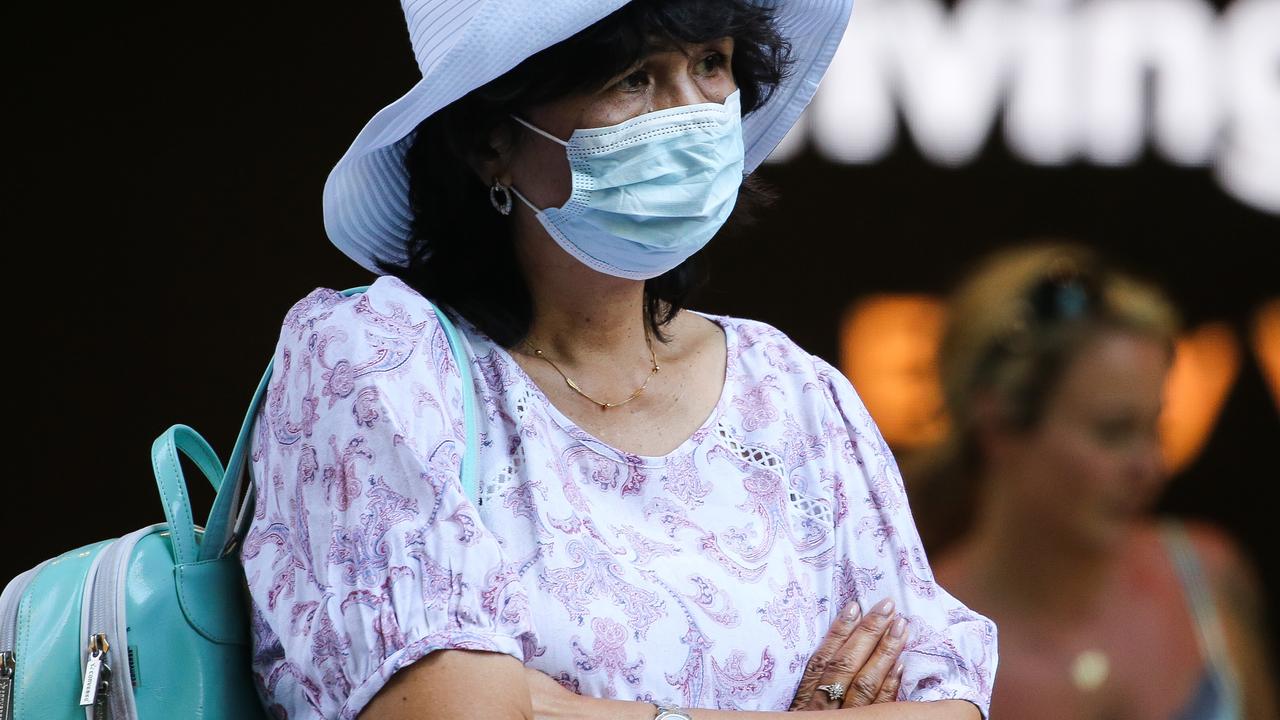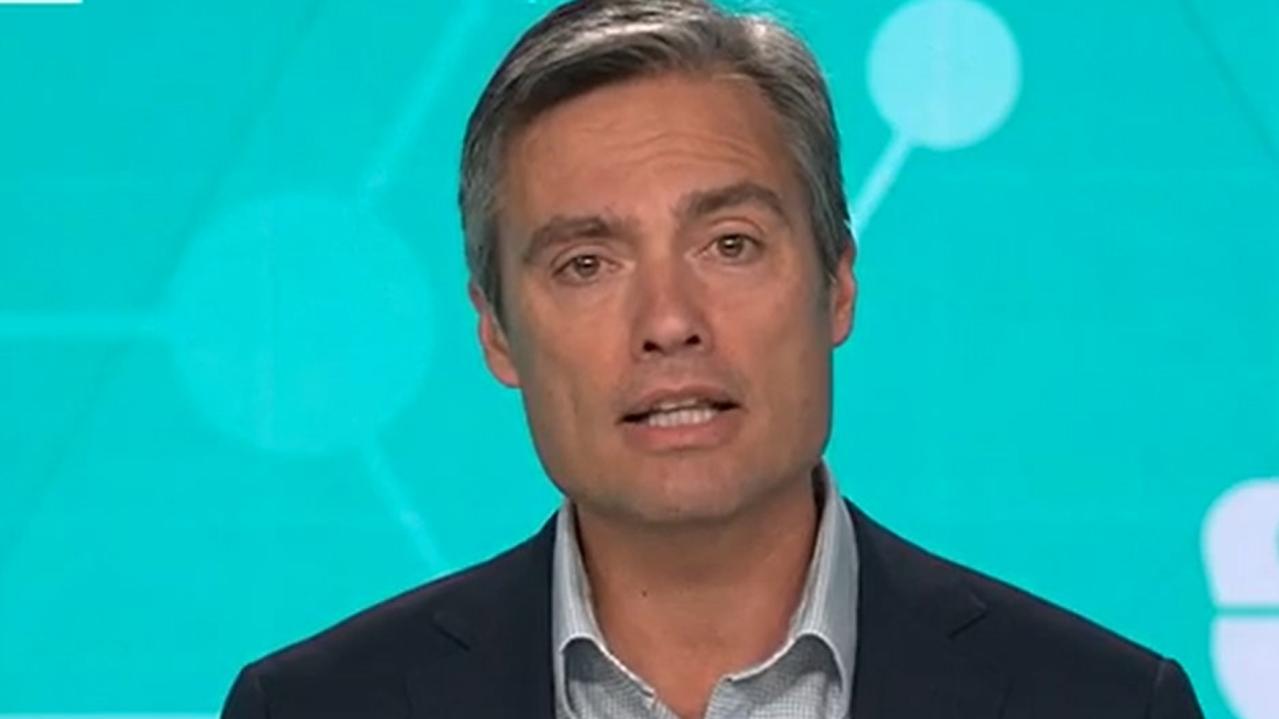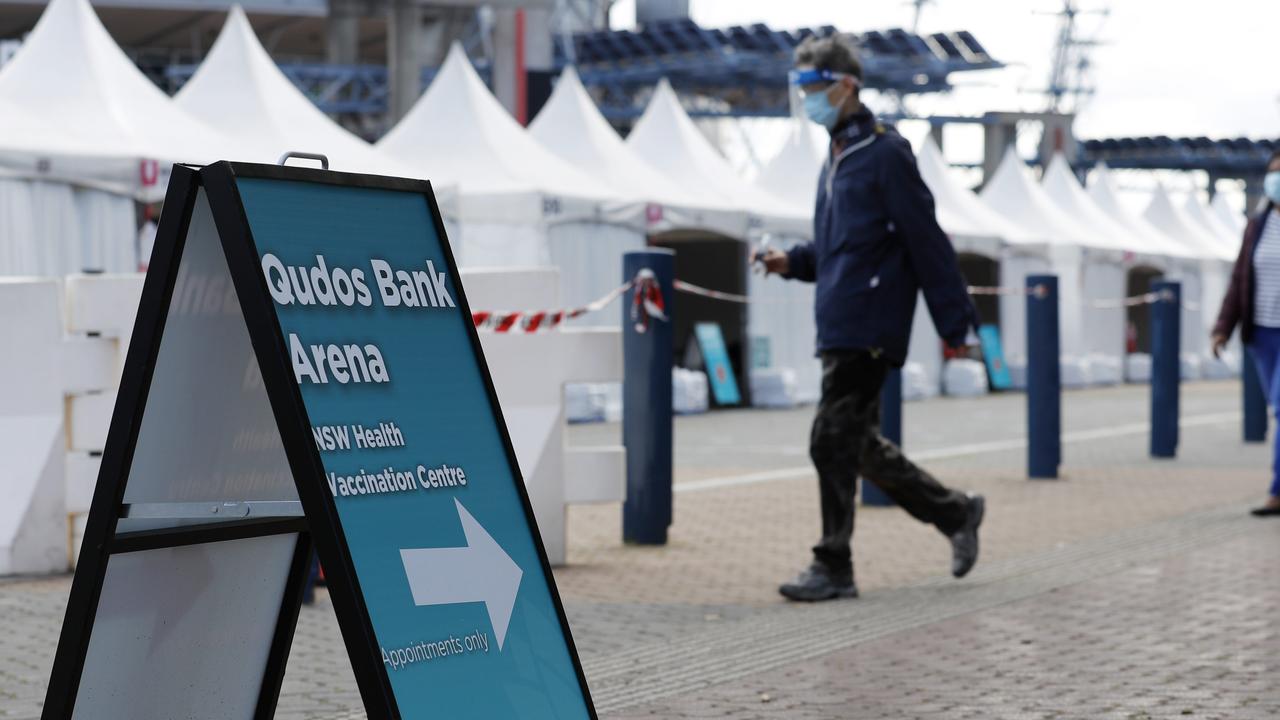Prime Minister Scott Morrison warns about the limitations of coronavirus modelling
One area of Australia is worrying authorities the most when it comes to COVID-19 infections, as the PM revealed details about the modelling for the government’s response.
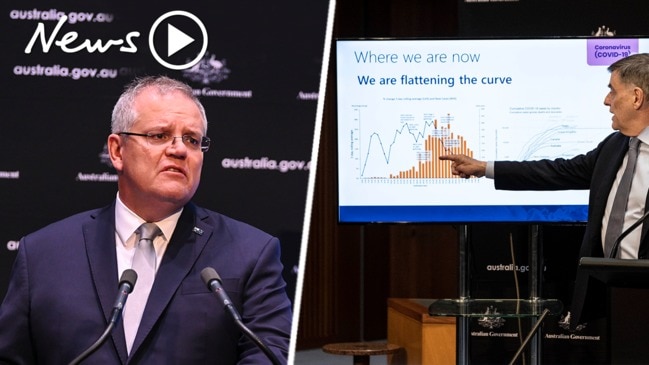
Chief Medical Officer Professor Brendan Murphy has revealed the “focal outbreak” of the coronavirus that is worrying authorities the most in Australia.
During a press conference on Tuesday to release details of modelling the Morrison Government has relied on to inform its response to the coronavirus pandemic, Prof Murphy said there wasn’t a widespread disease outbreak in Australia.
“In the real world in Australia we don’t have a disease outbreak across the whole country, we have focal outbreaks,” Prof Murphy said.
Prof Murphy said the outbreak that was worrying authorities the most was the community transmission happening in Sydney.
“That’s the one we’re focusing on and that’s why New South Wales has been so proactive and forward leaning,” he said.
“And the early indications as we’ve said, are positive but we cannot be complacent.”
Prof Murphy also revealed that Australia was also not pursuing a path of “herd immunity” to stop the spread of the coronavirus.
“To be clear we are not pursuing a path of herd immunity,” he said.
“We’re pursuing a path of control and suppression.”
He said some believed “over 50 per cent immunity, up to 60 per cent” of the community would need to become infected to achieve herd immunity to stop the spread of the virus.
“It would probably be at that level but we don’t know yet,” Prof Murphy said. “That’s modelled on other viruses, there’s no community in the world that has very high immunity as yet.”
Both Prof Murphy and Prime Minister Scott Morrison warned that the modelling being released on Tuesday was theoretical and did not predict what would happen in Australia.
In fact, the measures Australia has put in place have already reduced infection rates to a much lower rate than predicted.
“It’s just showing that these tools work,” Prof Murphy said of the modelling.
Two technical papers produced by The Doherty Institute show early modelling of two scenarios, a theoretical “worst-case” scenario and a model that looked at the risk to Australia of people travelling into the country from overseas.
RELATED: Latest coronavirus updates
RELATED: Disturbing decision Australia needs to make on ending the epidemic
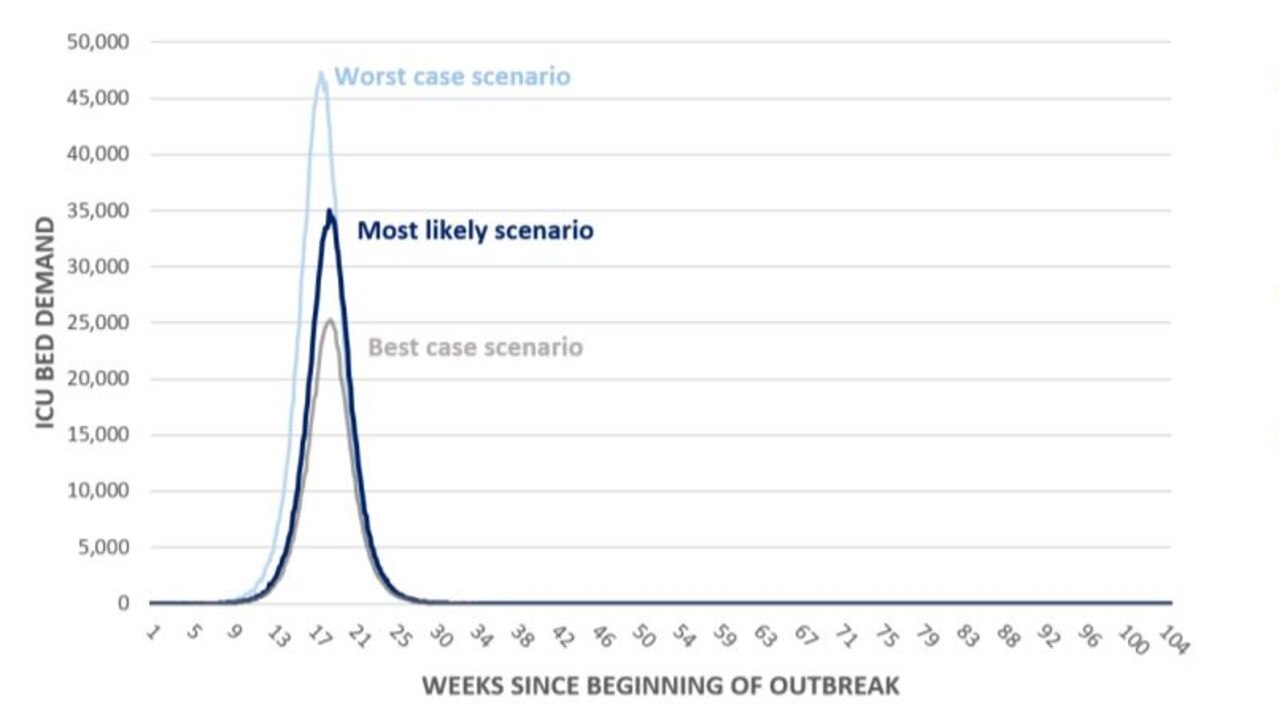
Prof Murphy said the modelling showed what would happen in an “unmitigated scenario” when no measures were taken to stop the spread of the virus and 23 million Australians got infected at once, which was “incredibly unlikely”. In this scenario only about 15 per cent of people who needed Intensive Care Unit beds would be able to access them.
Infection and hospitalisation rates were lowered when quarantine and isolation restrictions were introduced, but most people who needed ICU care still couldn’t get it.
However, once you started to introduce social distancing measures, this significantly reduced the infection rate so there would be enough ICU beds to meet demand.
“This is again, not predicting what we are doing now or what’s happening now,” Prof Murphy said.
The Prime Minister said the modelling was not based on Australian case data and did not model Australian responses.
“The modelling does not predict what will happen in Australia,” he said.
“It does not tell you how many Australians will contract the virus or how many may succumb to that virus, or how long it will last in Australia.”
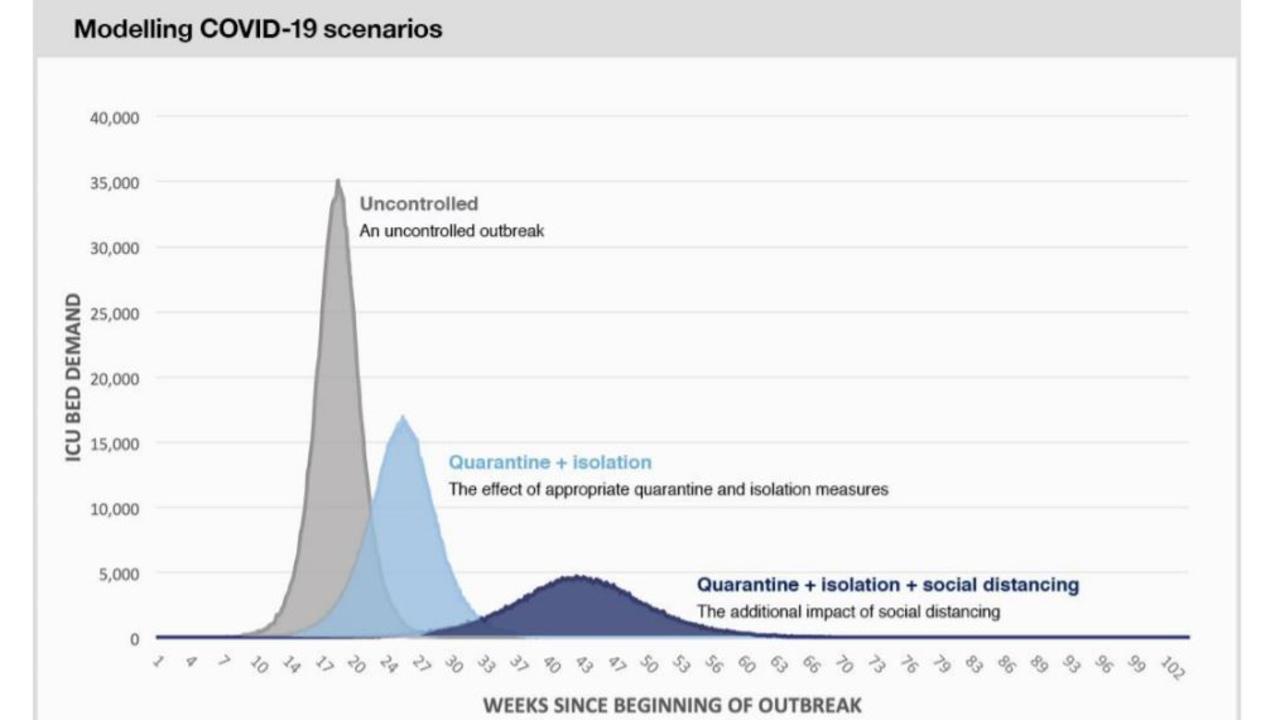
The modelling, which was released by The Doherty Institute after the press conference, is based on international data from both the Chinese experience and other countries.
Mr Morrison said it proves the theory of “flattening the curve” and the measures Australia had been taking could make a difference.
“Indeed, that is what we’re experiencing here in Australia,” he said. “We are on the right track.”
“National Cabinet of course will be seeking further modelling work to be done that does incorporate Australian responses.”
However, the small number of cases in Australia means there will not be a big case base to do that modelling.
“So the National Cabinet fully understands the limitations of this work,” he said.


